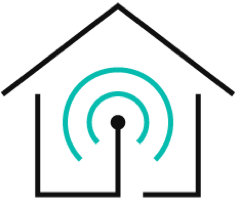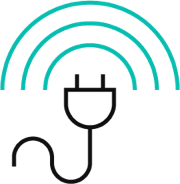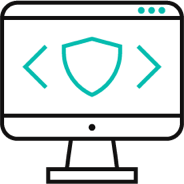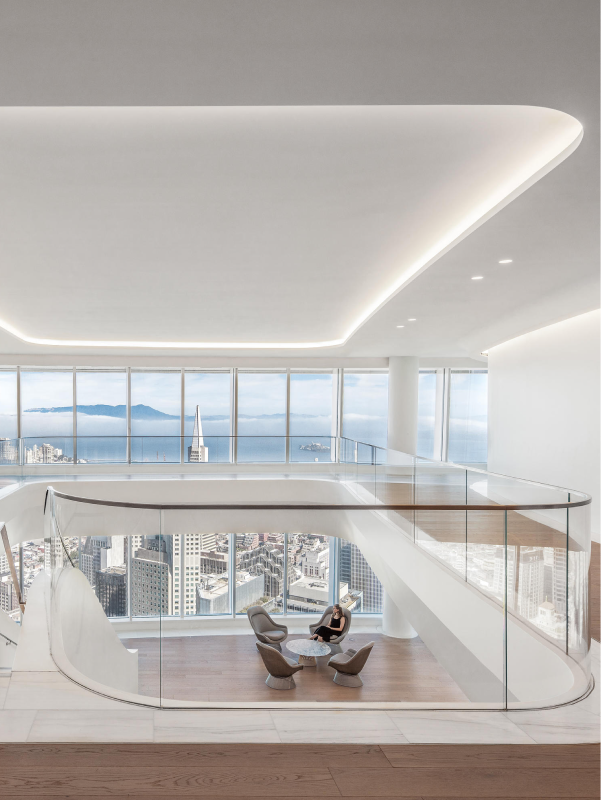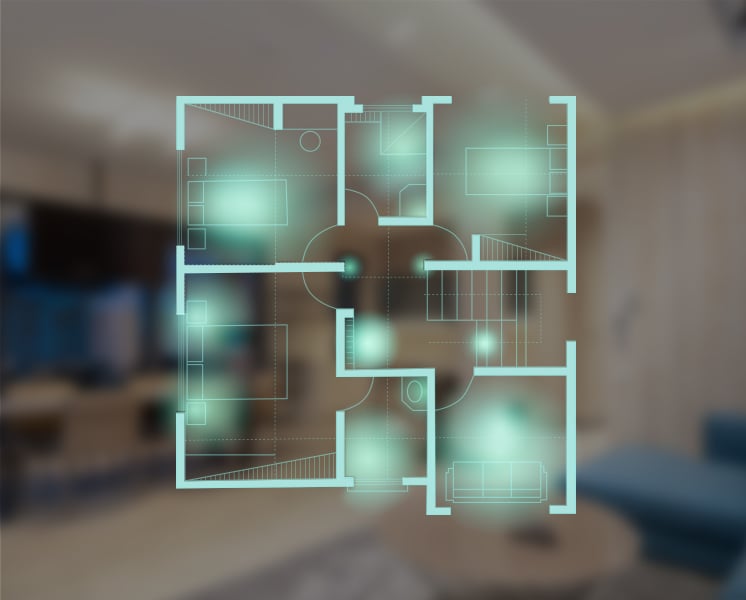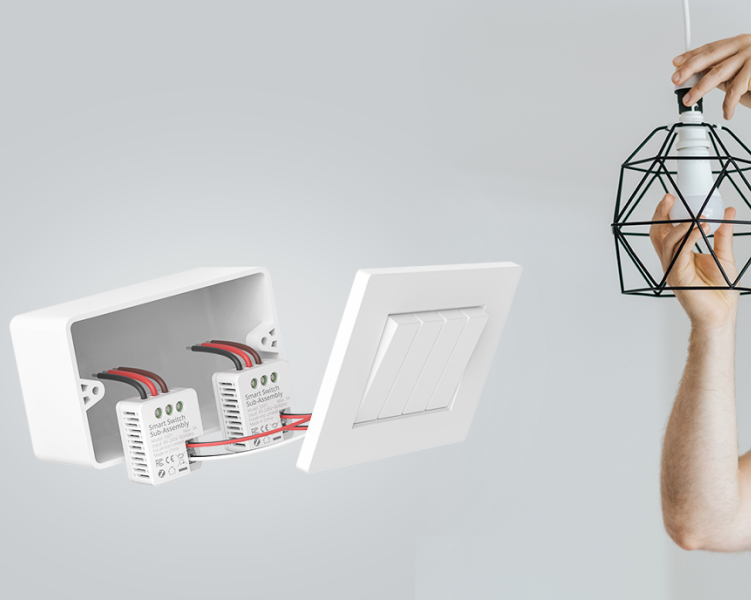Do you feel your eyes hurt and itch when working long hours at an office desk? Does your office lighting feel dull and inadequate?
Then you need some good office lighting ideas to overcome these disadvantages. These types of lighting handicaps are also found in home offices too.
When working on a screen or up close, depending on your needs, the correct office lighting ideas will provide comfort and reduce eye strain. These are two of the essential elements in any workspace.
Let's learn more about home office lighting ideas and the benefits that they provide in the workplace.
- What is Smart Office Technology?
- Benefits of Natural and Comfortable Light in Office
- How to Improve Office Lighting
- Smart Office Ideas
- Smart Connectivity Devices for a Smart Home Office
What is Smart Office Technology?
Technology is used in Smart Offices to boost output and teamwork. By becoming more energy-efficient and optimizing procedures, smart office technology enhances the working atmosphere.
The smart office makes use of technology and data analytics to ensure that the workplace is ready to meet the specific needs of each individual employee. Smart offices are able to easily adapt and change along with their companies.

Features of Smart Office
Employees that are happy at the workplace are the most committed to the maximum output. Each day, they make good progress because they are energetic and ready to come up with new ideas.
Let us look at some smart office features that boost workers' productivity.
Smart Desk
The comfort and productivity of employees are enhanced in various ways with the help of smart desks. It delivers the right settings for a great sit-stand posture when working for long hours.
A smart office maintains a list of available and reserved desk spaces that can be searched and used later on. It helps in locating officers who are spread throughout the office building, making communication easier.
Smart Conferencing
Today's office works rely on conferences and meetings more than ever before. There have been fewer in-person meetings recently due to changes in working habits.
Officers can host in-person and remote meetings with coworkers and clients using smart conference rooms. Additionally, they can videotape these meetings for later review. This makes keeping track of people who weren't present in the meeting.
Intelligent Climate Control
Office employees have different preferences when it comes to climate control. Some like it hot, others like it cold. Climate control is now available to employees, saving money and energy.
Intelligent climate control systems are capable of detecting user preferences and behavior patterns and adjusting the temperature accordingly. It has been demonstrated to have significantly increased production and employee morale.
Many companies offer smart thermostats that may be controlled using smartphone apps or web browsers.
Smart Lighting Control
Smart Lighting is another fundamental aspect of Smart Office. When a person enters the room, smart lighting can use sensors to turn on. Similarly, when the last person leaves, the smart light can turn itself off.
Daylight sensors automatically modify the lights' dimmer settings to fit your desired brightness levels. Depending on the time of day and the level of daylight entering the room, color-changing lights can adjust the color tone of office lights.
Smart Security
From efficient people management to remote system monitoring, smart security system helps an office in so many ways.
Access control can assist office staff and management in a number of ways. When connected with CCTV, you can see confirm people trying to enter the office or particular rooms within, then either give or reject access. You can access events occurring throughout the building using security cameras.
With biometric credentials, such as a face or retina scanning, these security solutions become even more unique to the person and thus more difficult to clone.
Benefits of Natural and Comfortable Light in Office
We need natural light to flourish, yet the modern system has been built to keep us mostly indoors with little access to comfortable light. The benefits of proper lighting in the workplace, particularly natural light, are immense for employees. Let's look at some of the benefits now.

Improving Worker's Wellbeing
Natural light is beneficial to our health and makes us happier and more content. It's important to remember that functioning effectively is equally as important as how you feel. People that are happier are more energetic, creative, adept at solving problems, and better communicators.
Refining Sleep Pattern
According to studies, those who are exposed to natural light sleep more soundly and for longer periods of time than those who are not. Workplaces with windows provide employees with a 176% increase in natural light exposure, and it also allows them to have 46 more minutes of sleep every night.
Natural light exposure contributes to the body's establishment and maintenance of circadian rhythms, the internal mechanism that regulates our sleep-wake cycle.
A Welcoming Atmosphere
An office can be made to feel warm and inviting by allowing light to enter through exterior windows. Installing glass partition systems in the interior area will enable you to achieve this. A natural light-filled environment improves mood and enhances any design aesthetic.
Increasing Productivity
Research has been conducted to prove how lighting impacts output. The study found clearly that work productivity is increased by natural light. Natural light boosts productivity while also making employees happier and more likely to remain with the company.
Additionally, natural lighting boosts output, improves employee retention, and lowers expensive employee turnover.
Decreasing Energy Cost
Artificial lighting uses around a third of the electricity in a commercial structure. It should come as no surprise that increasing natural lighting reduces the need for artificial lighting.
On the other hand, reducing electric bills depends on using the right design, layout, and window components. This is done to prevent energy savings from being offset by heat loss through windows or by letting in too much sunlight during the summer.
How to Improve Office Lighting
The nature and quality of the lighting in your workspace can help you be more productive. When it comes to office lighting, artificial lighting is even more important if there isn't much natural light accessible. Here are four tips to consider when selecting office lighting for your home workspace.
>> DIY home improvement ideas with lower cost
- Keeping the office light passive. The direct glare of the above lights should be avoided when working.
- Utilizing neutral lights whenever it is available. Warm light produced by the sun can enhance the working atmosphere.
- Having a task light will help productivity. Selecting a light source with a clear focus on computer work, and any type of paperwork will boost performance.
- Always be aware of the source of the light. When using a computer, a light source placed behind will almost surely cause an unpleasant glare on the screen.
Home Office Lighting Ideas
The most effective approach to home office lighting is to use a mix of ambient light, task lighting, and accent lighting. Each of these has a distinct function. Let's look more closely at each of these various lighting types.

Ambient lighting
This layer of lighting, also known as general lighting, provides the home office with overall illumination. The enclosed space has a constant lighting level thanks to ambient lighting.
Typically, it emits a soft, diffused light that lessens shadows and gives the environment a feeling of openness. For Smart homes and offices, these lights are typically hung or recessed into ceilings.
Task Lighting
This form of lighting is incredibly useful for tasks that need to be completed in a particular area. Task lighting in a home office typically takes the shape of directional desk lamps, however, floor lamps and even low-hung pendants over your workspace can also be effective.
These lights are adaptable and offer various levels of brightness. You can therefore modify them according to your needs.
Accent Lighting
Accent lighting primarily serves decorative functions, allowing you to highlight particular elements or sections of the room.
Accent lighting is also known as directional light. Prime examples of accent lighting include wall washers, uplights, and concealed LED strip lights.
Smart Lighting Control
Adding smart switches to a home office lighting system is a worthwhile investment. They have a plethora of features built-in.
With voice command, you can turn on and off your lights. They can also be used to create different lighting scenes for different office spaces.
EVVR In-Wall Relay Switch automatically turn off lights in areas that are not in use. It is possible to eliminate the need for visitors in the room to flick the switches.
Smart Connectivity Devices for a Smart Home Office
A Smart office needs smart devices to operate optimally. Also If you have automation in mind then you will need a versatile in-wall switch that can connect to almost anything.
EVVR In-Wall Relay S witch is a brilliant option for any smart home office. This switch is very easy to install, does not require any neutral wiring, and also has no flickering.
Thanks to its split-type design, functions flawlessly with all types of wall switches, preserving your office's aesthetics while letting you create an efficient and pleasant workspace.
Additionally, EVVR offers excellent control hubs like EVVR Center Lite and EVVR Hub, which are compatible with all Smart home gadgets. Their EVVR Pad S is yet another touchscreen home controller that makes the automation of smart homes simple!
EVVR is delighted to work with you to automate your office in a clever and efficient way. They provide a complete home automation solution. All of the devices can be controlled through The EVVR App
Final Thoughts
We hope that this article gave you some ideas for lighting solutions for your home office. EVVR can offer you a comprehensive smart home solution whether you are an integrator, professional installer, distributor, or DIYer. Get in touch with us and become our partner today!

